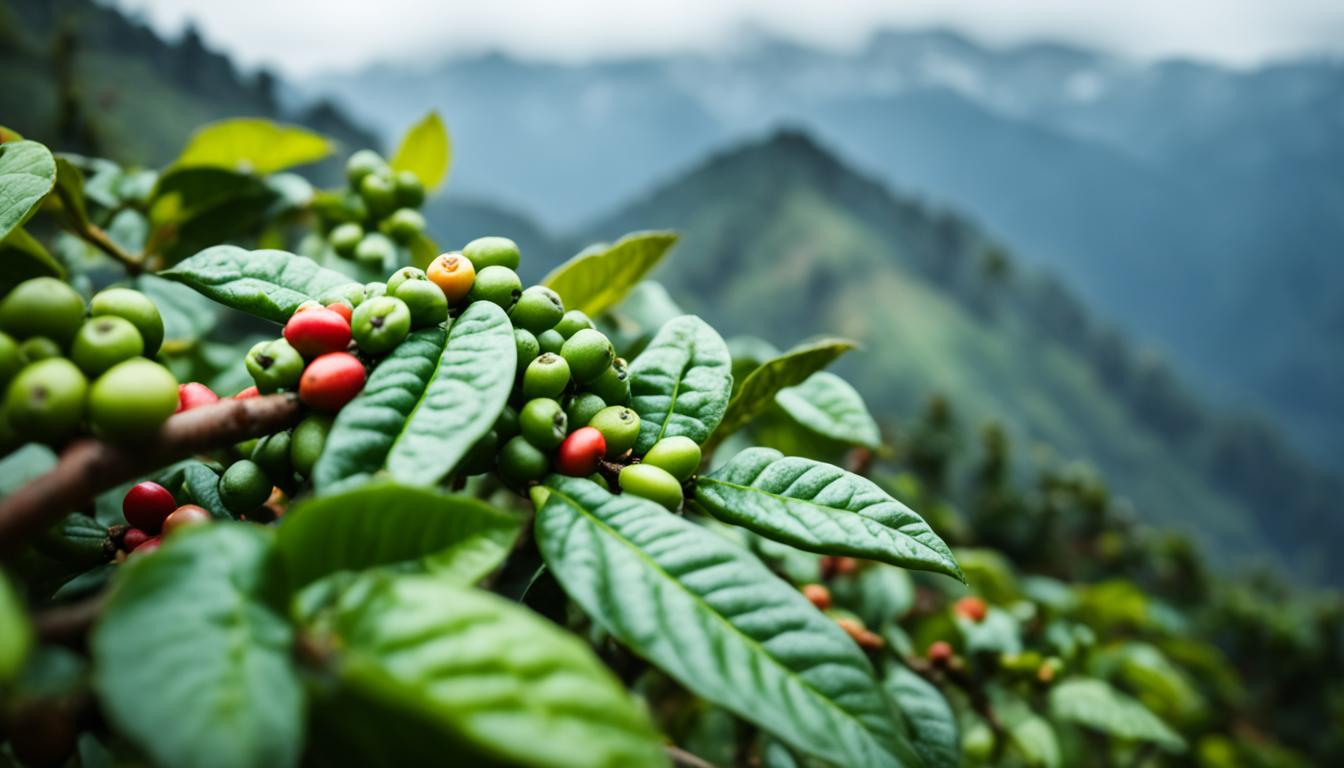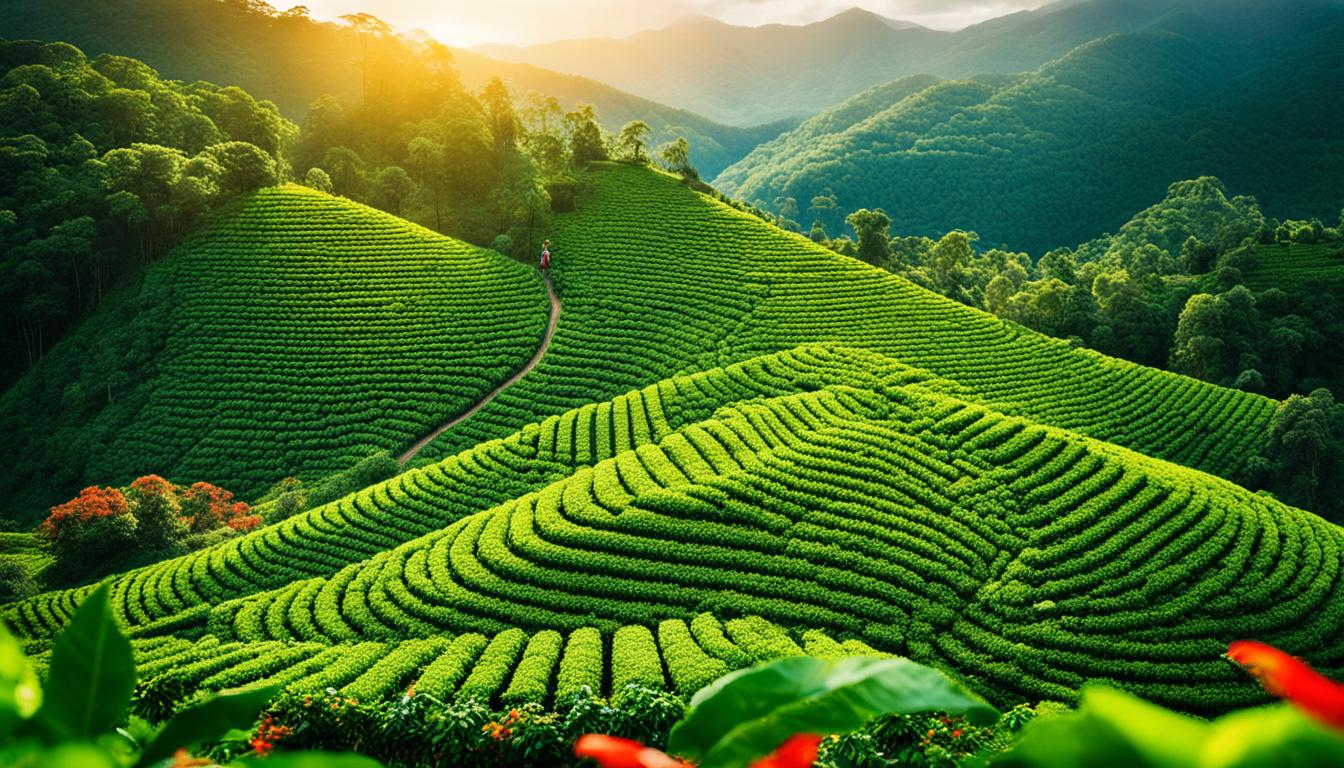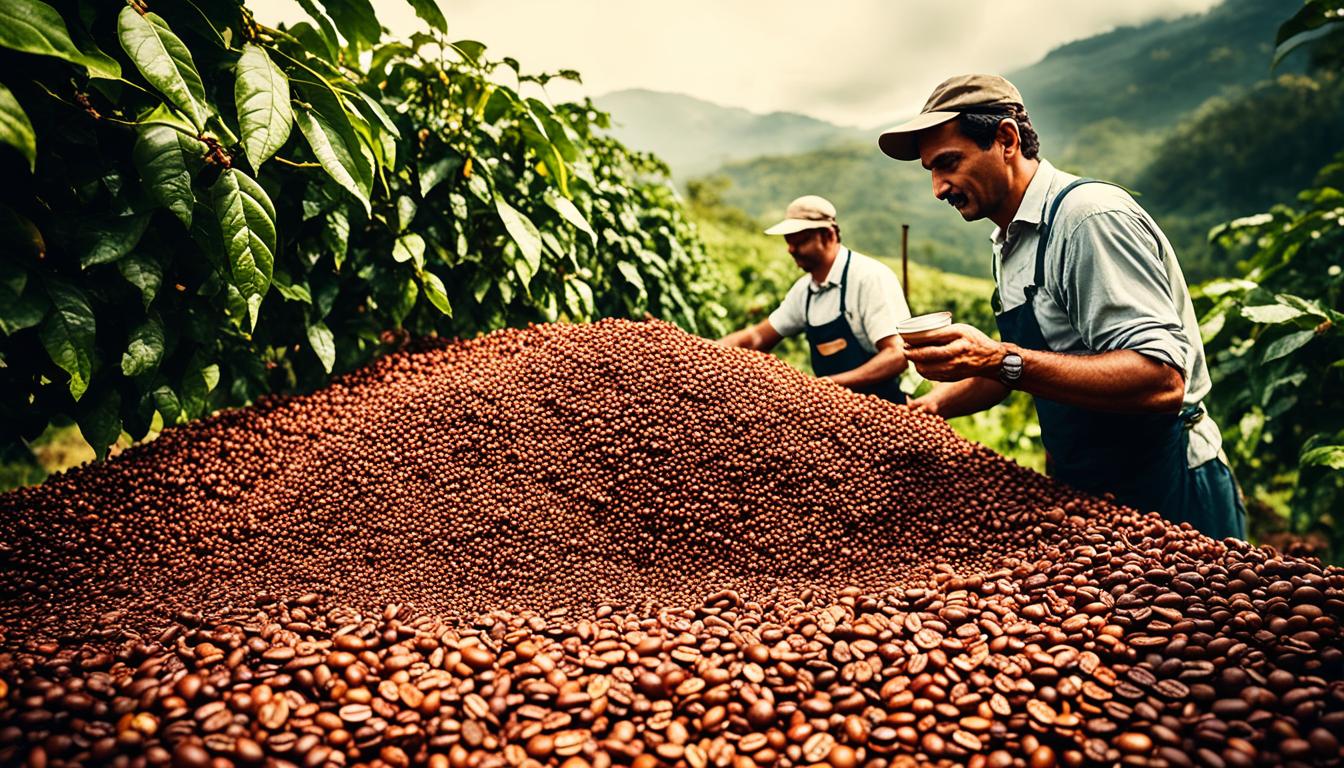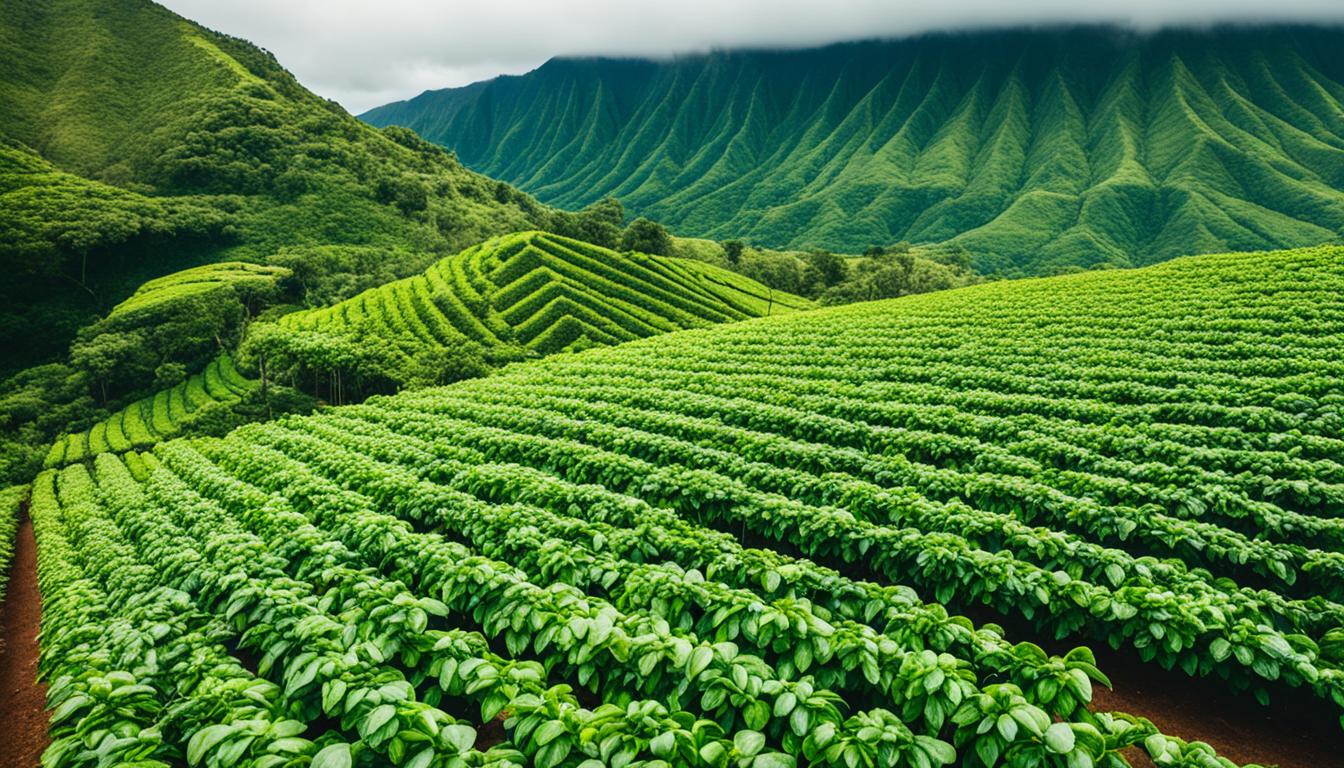The impact of altitude on coffee flavor is a fascinating topic that explores the intricate relationship between nature and our favorite caffeinated beverage. Have you ever wondered why certain coffees have a more complex and desirable taste than others? Well, it turns out that the altitude at which coffee is grown plays a significant role in shaping its flavor profile.
When coffee is cultivated at higher altitudes, it undergoes slower growth and development, resulting in a more concentrated and nuanced taste. This slower maturation process allows the coffee beans to develop unique flavors that make for an exceptional cup of Joe. Altitude affects key characteristics of coffee such as acidity, sweetness, and overall flavor complexity, making it an essential factor to consider when exploring different coffee varieties.
Altitude influences the entire coffee experience, from the first sip to the lingering aftertaste. So, let’s dive into the incredible impact that altitude has on coffee flavor and why it matters for our coffee-loving palates.
Key Takeaways:
- Altitude plays a crucial role in shaping the flavor profile of coffee.
- Higher altitude coffee beans tend to have a more complex and desirable taste.
- The slower growth and development at higher altitudes result in a more concentrated and nuanced flavor.
- Altitude affects characteristics such as acidity, sweetness, and overall flavor complexity.
- Exploring different coffee varieties from various altitudes allows for a diverse and unique coffee experience.
The Impact of Altitude on Coffee Flavor Profiles
The altitude at which coffee is grown plays a fundamental role in shaping the flavor profiles of the beans. Whether coffee is cultivated at higher or lower elevations has a significant impact on its taste, aroma, and overall quality.
Coffee beans grown at higher altitudes tend to exhibit more density and complexity in their flavor profiles. With thinner air and cooler temperatures, the slower maturation process at higher altitudes allows the beans to develop unique characteristics that result in a richer and more nuanced taste. These beans often showcase brighter acidity and intricate floral or fruity notes, providing a truly exceptional coffee experience.
On the other hand, coffee grown at lower elevations offers a milder flavor profile with nuttier or chocolaty undertones. The different environmental conditions and soil composition at lower altitudes contribute to a distinct taste that is equally delightful and satisfying.
Whether you prefer the vibrant flavor profiles of altitude-grown coffee or the subtle nuances of lower elevation beans, the influence of altitude on coffee taste is undeniable. Exploring the diverse range of coffee varieties grown at different altitudes allows us to savor the intricate flavors and complexities that arise from varying geographical conditions.
Furthermore, altitude-grown coffee not only delights our taste buds but also showcases the craftsmanship and dedication of coffee producers who meticulously cultivate and harvest these beans. By understanding the impact of altitude on coffee flavor profiles, we can appreciate the artistry behind each cup of coffee we enjoy.
Understanding the Relationship Between Altitude and Coffee Flavors
Altitude plays a crucial role in shaping the flavor of coffee beans. At higher altitudes, where the air is thinner and cooler, coffee beans tend to mature more slowly, allowing them to develop intricate flavors. The reduced oxygen levels at higher elevations affect the way beans absorb nutrients from the soil, which in turn impacts the taste of the coffee they produce.
This slower growth process results in denser beans with a higher concentration of sugars, ultimately leading to a richer, more complex flavor profile. Altitude also influences the aroma of coffee, with high altitude coffee often exhibiting distinctive and aromatic qualities.
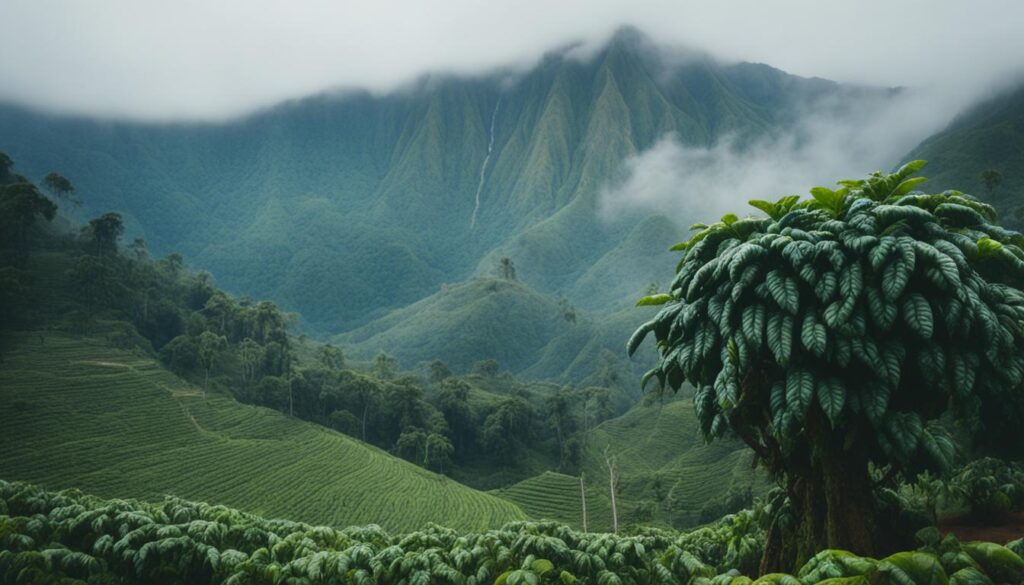
The altitude at which coffee is grown significantly influences both the aroma and flavor of the final cup. As the beans grow at higher altitudes, the cooler temperatures and thinner air slow down the maturation process. This extended development period allows the beans to absorb more nutrients and flavor compounds, resulting in a more pronounced and nuanced taste.
Furthermore, the reduced oxygen levels at higher elevations impact the way coffee plants metabolize and store sugars. This leads to beans with increased sweetness and complexity, which are highly sought after by coffee enthusiasts.
High Altitude Coffee Flavor
High altitude coffee is known for its exceptional flavor characteristics. The unique combination of factors such as slower growth, increased sugar content, and distinct terroir contribute to the development of a refined taste profile.
At higher altitudes, where the climate is cooler and the terrain is steeper, coffee plants experience more challenging conditions. This stress on the plants leads to enhanced flavor development as they adapt to thrive in their environment.
High altitude coffee often exhibits vibrant acidity, floral or fruity notes, and a smooth, lingering finish. These flavors come together to create a truly memorable and enjoyable coffee drinking experience.
| Characteristics | Low Altitude Coffee | High Altitude Coffee |
|---|---|---|
| Acidity | Mild | Bright and Pronounced |
| Flavor Complexity | Moderate | Rich and Nuanced |
| Aroma | Subtle | Distinctive and Aromatic |
| Sweetness | Gentle | Highly Perceived |
It is important to note that while high altitude coffee is generally prized for its superior flavor, the taste preferences of individuals vary. Some may prefer the milder, nuttier profiles associated with lower elevation coffee. Ultimately, the choice between high and low altitude coffee comes down to personal taste and the flavor experience one seeks.
Effects of Altitude on Coffee Characteristics
Altitude has a significant influence on the characteristics of coffee. It impacts factors such as acidity, sweetness, and overall flavor complexity, resulting in unique taste profiles for coffee cultivated at different elevations within regions. The interaction between elevation, climate, and soil composition contributes to the complexity and depth of high-altitude coffees.
When coffee cherries mature at higher altitudes, where the air is thinner and cooler, the slower maturation process enables the development of more concentrated sugars. This leads to a higher perceived sweetness in the brewed cup, creating a delightful and satisfying experience for coffee enthusiasts.
The acidity levels in coffee grown at higher altitudes are often brighter and more pronounced, adding a zing to the flavor profile. This acidity contributes to a lively and vibrant taste that complements the other flavor notes present in the coffee.
The nuances in flavor arise from the unique terroir created by coffee cultivation at different altitudes. The thinner air and cooler temperatures at higher elevations create an environment where coffee cherries develop more slowly, allowing for the formation of complex and desirable flavors.
To illustrate the impact of altitude on coffee characteristics, let’s take a look at the following table:
| Altitude Range | Taste Profile |
|---|---|
| Low Altitude (0-1,000 meters) | Milder flavor profile with nuttier or chocolaty undertones. |
| Medium Altitude (1,000-1,500 meters) | Complex flavor profile with balanced acidity and sweetness. |
| High Altitude (1,500+ meters) | More pronounced acidity, bright flavors, and a higher perceived sweetness. |
This image visually represents the influence of altitude on coffee quality, highlighting the importance of elevation in determining taste profiles and flavor characteristics.
By understanding the effects of altitude on coffee characteristics, coffee lovers can make informed choices and explore the diverse range of flavors that high-altitude coffees offer.
Conclusion
Altitude plays a crucial role in the world of coffee by influencing its taste, quality, and overall flavor profile. When it comes to altitude and coffee, we discover a fascinating connection where the altitude at which coffee beans are grown impacts their taste characteristics. Beans grown at higher altitudes tend to exhibit a more complex and pronounced flavor compared to those cultivated at lower elevations.
The slower maturation process and reduced oxygen levels at elevated altitudes contribute to the development of denser and more flavorful beans. These beans offer a delightful array of taste variations, highlighted by their acidity, sweetness, and overall complexity. Exploring different altitudes allows coffee enthusiasts to embark on a journey to experience the diverse and unique flavor profiles that arise from varying cultivation practices, environmental conditions, and terroir.
Appreciating the intricate relationship between altitude and coffee flavors adds a deeper level of understanding and enjoyment to every cup brewed. As we savor the craftsmanship behind each sip, we acknowledge the impact that altitude has on the rich tapestry of aromas and tastes in our coffee. So, the next time you’re reaching for that perfect cup, consider the altitude at which the beans were grown and experience the elevated coffee profile that awaits.
FAQ
How does altitude affect the taste of coffee?
Altitude plays a significant role in shaping the flavor of coffee. Higher altitudes often result in more complex and desirable flavor profiles, with beans exhibiting brighter acidity, floral or fruity notes, and a rich, nuanced taste. Lower altitudes, on the other hand, tend to produce beans with milder flavors, nuttier or chocolaty undertones.
Why do coffee beans grown at higher altitudes have a more complex flavor?
Coffee beans grown at higher altitudes undergo a slower maturation process. This slower growth allows for more time for sugars to develop, resulting in beans with a higher concentration of sugars and a more complex flavor profile. The thinner air and cooler temperatures at higher altitudes also contribute to the distinct flavor characteristics of high-altitude coffee.
How does altitude affect the aroma of coffee?
Altitude has an impact on the aroma of coffee beans. High altitude coffees often exhibit distinctive and aromatic qualities, which arise from the interaction between elevation, climate, and soil composition. The unique terroir created by different altitudes contributes to the complexity and depth of the coffee’s aroma.
What are the characteristics influenced by altitude in coffee?
Altitude affects various characteristics of coffee, including acidity, sweetness, and overall flavor complexity. Beans grown at higher altitudes tend to have brighter acidity and higher perceived sweetness due to the slower maturation process and development of concentrated sugars. Altitude, along with climate and soil composition, creates a unique terroir that imparts distinctive qualities to the coffee beans.
How does understanding the relationship between altitude and coffee flavors enhance appreciation?
Understanding how altitude influences coffee flavors allows coffee lovers to explore different altitudes and experience the diverse and unique flavor profiles that arise from varying environmental conditions, terroir, and cultivation practices. This knowledge deepens the appreciation for the craftsmanship behind each cup of coffee brewed.

